ASU music professor paints abstract music with magnificent organs
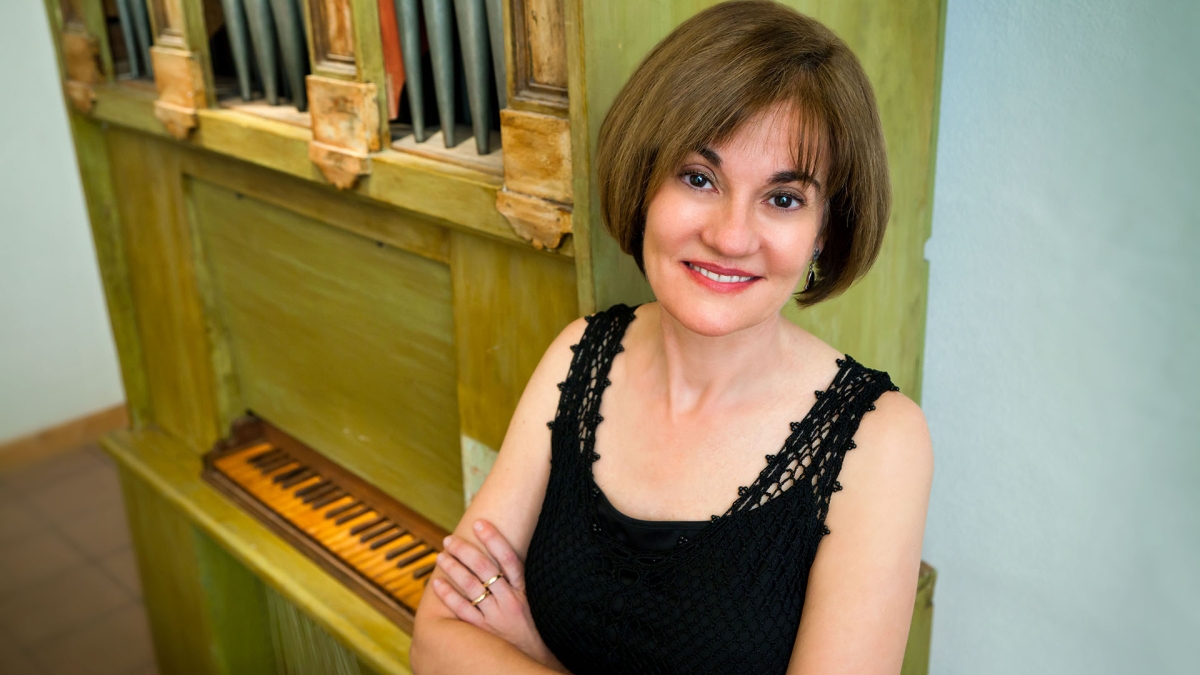
Professor Kimberly Marshall of the ASU School of Music with ASU's Traeri organ. Photo courtesy of Kimberly Marshall
Kimberly Marshall, the Patricia and Leonard Goldman Endowed ProfessorLong-term gifts like the Goldman professorship contribute to the high quality of education at ASU because they deliver a dependable, permanent source of funding that equips the university to support the best professors, cutting-edge research, and top academic programs. For more about supporting ASU through Campaign ASU 2020, go to GiveTo.ASU.edu. in Organ in the Arizona State University School of Music, is known worldwide for her compelling programs and presentations of organ music. She performs regularly in Europe, the U.S. and Asia, is an accomplished teacher and is considered an expert in medieval music.
Marshall was an invited performer for an inaugural recital on the University of Notre Dame’s new Fritts organ as part of the Reformations and the Organ, 1517-2017 Conference in September. Her premiere recital was one of three held at the Basilica of the Sacred Heart.
Question: The inauguration of the Notre Dame Fritts organ was considered a premiere event. What is so special about this organ?
Answer: It is very special because it is the largest instrument built by one of the finest organ builders in the world; it is in a very fine acoustical setting; and it is at a university where there is enormous emphasis on the organ program.
Notre Dame has the most well-endowed program in the country, and the impact of the instrument is going to be magnified by the resources that they put into their organ program.
The reason that the instrument is such a high quality is because organ builder Paul Fritts is really a genius at design and at voicing, which is the individual manipulation that makes each pipe so that it sounds well in the room.
Fritts is incredibly gifted not only for designing the instrument but because this instrument is really three organs in one — it has French sounds, it has north German sounds and it has central German sounds. These are all different traditions of organ building, and because the instrument is so large, he is able to include all of these. It also has some Spanish sounds that are very distinctive for playing Spanish music.
The Notre Dame organ is extremely special because it has so many possibilities.
Q: ASU also has an organ designed and built by Paul Fritts. Did you perform the inaugural 1992 concert on our Fritts organ?
A: No, I did not perform the inaugural recital at ASU. There was a big conference, and I was invited to give a paper and present a master class. I was working in California, and it was my first visit here.
The organ professor who was here before me was really the moving force behind getting our Fritts organ as part of the new building. He did the inaugural performance, as he should. I really fell in love with the place and never really dreamed that I would be back as the organ professor and inherit all this about six years later.
An interesting note about our Fritts organ is that because it gets so much use with practicing, teaching and our robust concert series, we are estimating it has about 100 years’ worth of use on it. The cow bone keys already have little wearing grooves.
Q: Can you elaborate on why a Fritts organ is so special and organ building in general?
A: There is a little bit of a cultural cringe with organ because, obviously, the instrument that most of the repertoires were composed for are in Europe. The organs that have survived are really important instruments and incredibly special. American builders have only in the past 30 years really been trying to emulate the style. Before that the American builders were creating an American style that was very eclectic. In the 1950s and '60s there was sort of this idea that there is “one organ that plays everything,” and everything sounded the same.
But if you are really after art — a high-level artistry — that’s really not satisfactory.
There were two main influential American builders that had studied in Europe and really worked to bring a new awareness of the historical models to the U.S. Paul Fritts is the next generation — the generation that really got it. Fritts is one of three builders that exist in the European tradition.
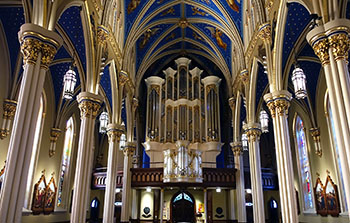
The University of Notre Dame Fritts organ inside the Basilica of the Sacred Heart. Courtesy of Paul Fritts & Company Organ Builders
Organ building is all done on-site because it’s all a function of the acoustics and takes so much expertise. You have to be an expert designer and an engineer. If the organ front is hanging, you have to know formulas just to build the supports because of the stresses. You also have to be an expert woodworker and expert metallurgist, and have all the musical tools to make the adjustments to the pipes.
The main problem for American organ builders is the acoustics. They are usually building instruments in much less reverberant places because Americans like their carpet, their cushions and their comfort — all things that detract from the acoustics. The Notre Dame $5 million project was so expensive because it was not all for the organ. About half was because of acoustical redesign — they had to rip up carpet and put in new flooring to make the acoustics better.
We often say that the most important stop in the organ is the “roof,” meaning the acoustics.
It is important for people to understand that and, for me, to increase awareness that there are different types of acoustics for different types of music.
ASU Gammage was brilliantly designed for acoustical music. If you have ever heard a symphony concert, a wind band concert, any sort of acoustic music there, you know it is spectacular. How sad it is that Frank Lloyd Wright did not build more acoustic spaces. I have been up in the third balcony and you can hear the first flute clear as a bell. Though the acoustics are not very good for amplified music, they are phenomenal for acoustic music.
Q: You have performed on many famous and historic organs. What was the oldest organ you have played, and do you have a favorite?
A: The oldest playable organ is generally considered to be an organ in Sion, Switzerland, dated around 1435. I’ve played there a couple of times, and it would be in my top 20 organs. The Sion organ is in a very, very beautiful church way up on a hill, and the organ is perched up on a wall — what we call a “swallow's nest” placement hanging on the wall. When organs are that high up, the sounds project.
My favorite? I love them all equally, and they are all different.
That’s the great thing about organs — you can be playing on a small organ one week and a large monstrosity the next.
Q: How do you see the future of organ at ASU and in general?
A: In addition to teaching organ majors, I teach the basic music appreciation courses for nonmajors. A lot of the students do not really listen to the music, unfortunately, because they are distracted by doing something else. I think it’s very, very hard for a lot of people in our society, not just young people, to sit down and just listen to something for five minutes. I think that is the biggest threat to music in general.
The beauty of music is that it’s an abstract language. It can be anything.
One thing I love about the organ is that it’s also so abstract. Obviously organ can accompany things, but what I like is the solo. You have all these hammers, all these sounds — you are like a painter with sounds putting it all together.
There is a shortage of young organists, so my students get jobs even before they start their studies, which is nice. That is a result of high demand and low supply.
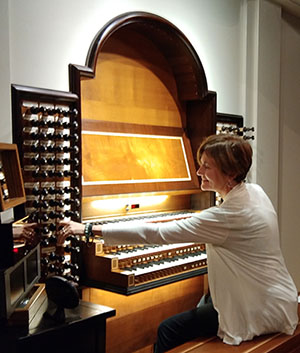
Kimberly Marshall playing the Notre Dame Fritts organ. Photo courtesy of Kimberly Marshall
2018 Organ Series concerts:
Sunday, Jan. 14, 2:30 p.m. Organ Hall
Bach’s Formative Influences, Part I
Kimberly Marshall, Goldman Professor of Organ
Sunday, Jan. 28, 2:30 p.m. Organ Hall
‘Songs of My Homeland’
Ashley Snavley, ASU Alumni
Sunday, Feb. 18, 2:30 p.m. Organ Hall
Toccata Power!
Timothy Olsen, North Carolina organist
Sunday, March 18 2:30 p.m. Organ Hall
Bach’s Formative Influences, Part II
Geoffrey Ward, ASU alumnus
The ASU School of Music, in the Herberger Institute for Design and the Arts, offers bachelor’s, masters and doctoral degrees in organ performance. Visit https://music.asu.edu/degree-programs/organ for more information.
More Arts, humanities and education
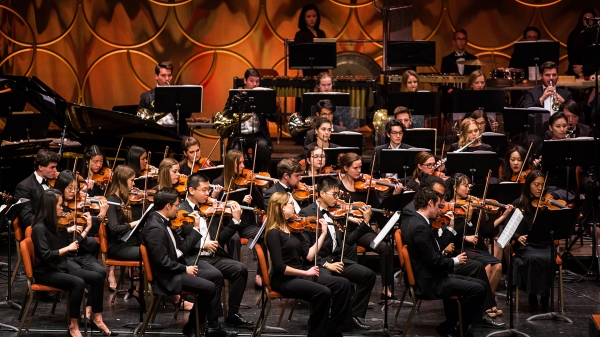
ASU Symphony Orchestra welcomes visionary conductor Jonathan Taylor Rush
Guest conductor Jonathan Taylor Rush will join Arizona State University’s Jason Caslor, director of bands, to lead the ASU…
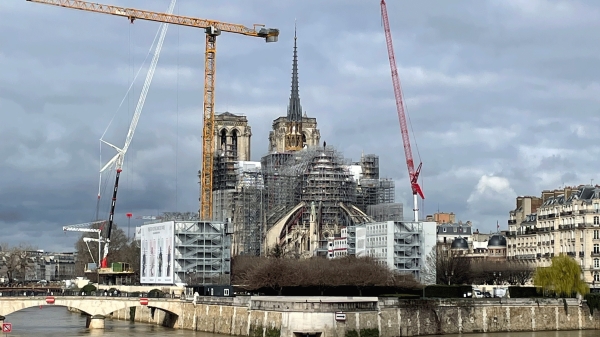
Chemistry classes are key to art student's success
Amanda Barnette has a passion for art preservation. That means that, for the past four years, the Arizona State University…
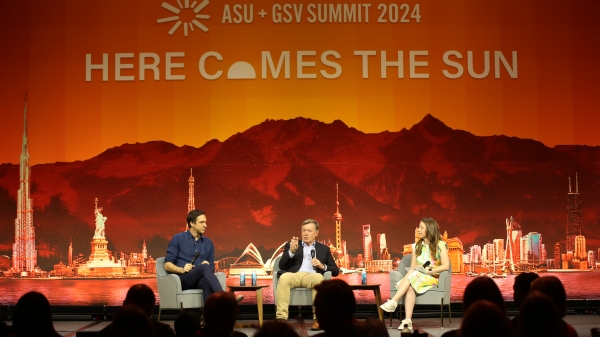
ASU+GSV Summit tackles big questions about AI, technology, education
Editor's note: We'll be updating this story daily throughout the summit. The annual ASU+GSV Summit kicked off in San Diego on…